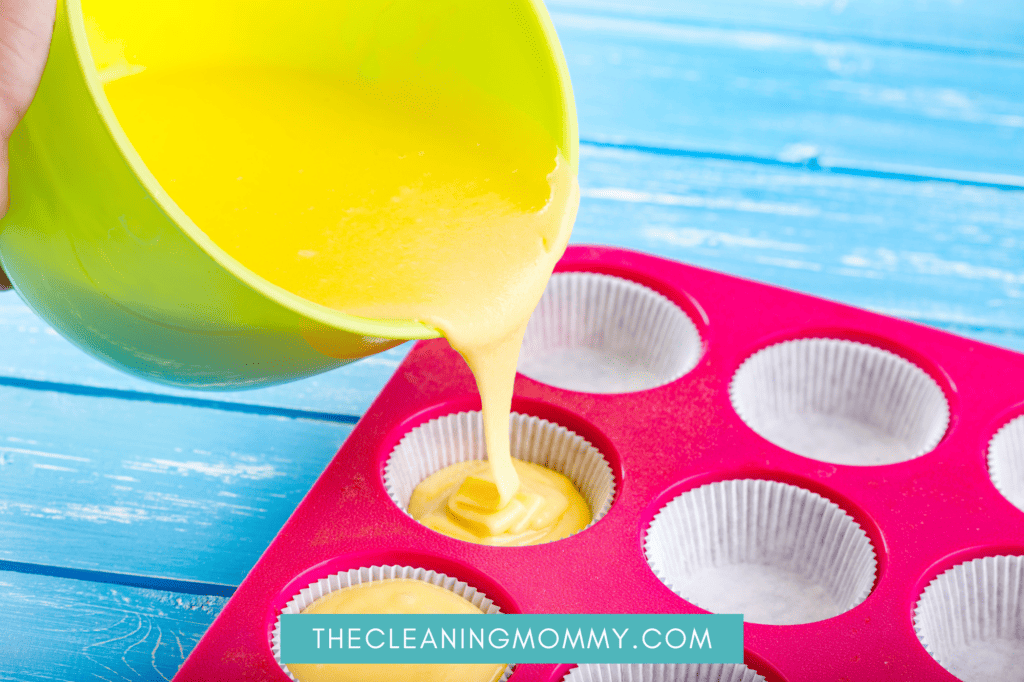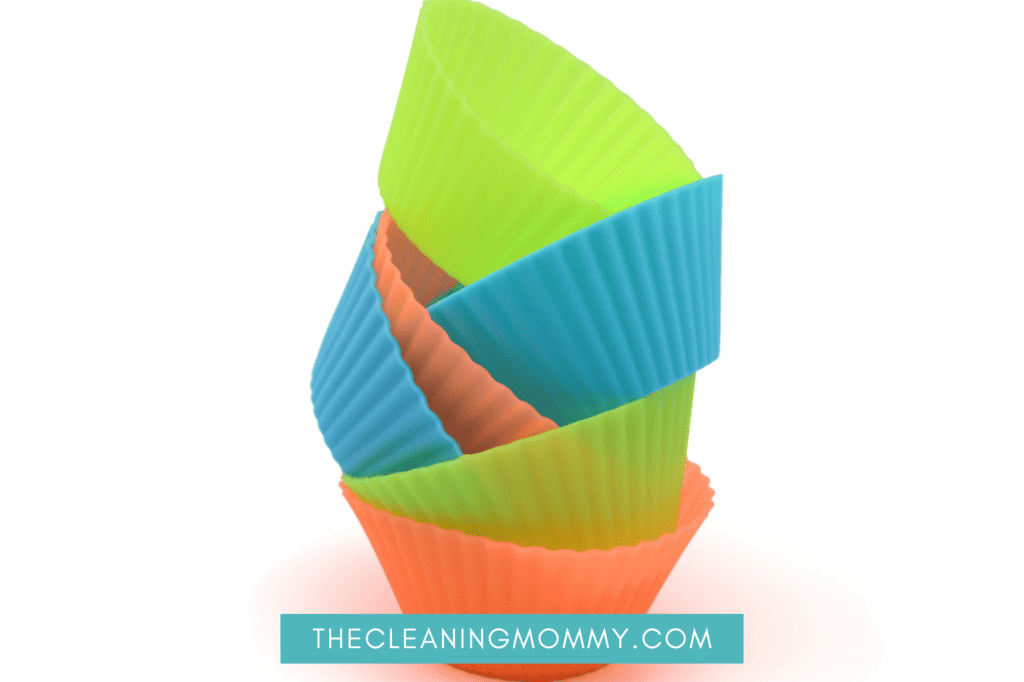Silicone molds have become increasingly popular among bakers and pastry chefs thanks to their flexibility and durability. It’s no wonder why many people prefer them over traditional metal or plastic molds. However, one of the downsides of using silicone molds is the difficulty of cleaning them. Due to their nonstick properties, food particles and oils can easily cling to their surface, making the cleaning process a tedious task.
In this article, we’ll dive into the essential steps and tips on how to clean silicone molds effectively. We’ll also discuss the benefits of cleaning silicone molds regularly and the best practices to extend their lifespan.
Whether you’re a professional baker or a home cook, this guide will help you maintain your silicone bakeware.
Key Takeaways for How to Clean Silicone Molds
The basic process for cleaning silicone molds is:
- By hand use a sink of hot water and mild dish soap
- To clean in the dishwasher, always put them on top
- Use baking soda and hot water to get rid of tough stains!

Why Use Silicone Molds?
Silicone molds offer a plethora of benefits when it comes to baking both sweet and savory dishes. First and foremost, silicone molds are naturally non-stick which means they require no greasing or floured coating prior to usage. Another benefit of silicone molds is their flexibility and durability. Silicone easily withstands high temperatures, making it ideal for baking, and retains its shape even after repeated use and exposure to varying temperatures from the heat of the oven. Additionally, silicone molds are easy to clean; their non-porous surface prevents the absorption of odors and flavors, and they are dishwasher safe.
Always ensure that you pay attention to the manufacturer’s instructions and recommendations to preserve your silicone molds’ integrity and functionality. Be mindful of the temperature range, and avoid overheating them completely.
How Often Do You Clean Silicone Baking Molds?
Ideally, your silicone baking molds should get a thorough cleaning before and immediately after each use. Don’t let residue sit on the molds as it will harden and become harder to clean.
How To Clean Silicone Molds For The First Time
You have two choices for the method used to clean silicone molds for the first time. Keep reading to learn how to clean silicone molds properly.
Vinegar Soak
With a cloth or sponge, apply a mixture of 1 part distilled white vinegar to 3 parts boiling water to the silicone mold. After 10 minutes, rinse it off with water.

Baking Soda Soak
In a silicone bakeware mold, pour baking soda with very hot water, and let it sit for at least one hour. Rinse the remaining baking soda away with warm water.
Regular Daily Cleaning
Use Soap And Water
To clean your silicone cookware or silicone bakeware, start with a sinkful of hot water. Warm soapy water with a mild soap works best. Use dish soap with a grease-cutting agent, like Dawn. Avoid using abrasive sponges, as these can damage resin silicone molds. A microfiber cloth works best on silicone cookware.
Dishwasher
You can clean silicone molds immediately after using with the dishwasher. Be sure to use proper dishwashing soap or dishwashing liquid and avoid super hot temperatures. They should alwys go in the top of the dishwasher and not the bottom.
Baking Soda
Using baking soda and hot water, mix it into your silicone mold, then rinse thoroughly with cold water.
Stubborn Stains
Over time, silicone bakeware can develop tough stains. There are a few ways you can clean silicone bakeware and resin molds to remove burn marks and food stains.

How To Remove Stains And Burns
The above white vinegar and baking soda methods work for removing tough stains like burn marks from silicone resin molds.
Alternatively, you can use some warm water to make a baking soda paste to apply on baking mats and silicone pieces. Or, sprinkle baking soda on the bottom of a burnt silicone mold with hot water and leave for an hour before rinsing.
If the soak method doesn’t work, apply baking soda as a thick paste over stubborn stains and gently rub with a nonabrasive sponge after. Don’t forget to wear gloves!
Using hydrogen peroxide or chlorine bleach will get rid of heavy stains on light-colored silicone pieces. Any discoloration will be removed quickly and safely with these products.
Put two tablespoons of bleach in two cups of water and soak the mold in hydrogen peroxide for 24 hours. After rinsing, dry thoroughly with a microfiber cloth. Don’t forget to wear rubber gloves.
Oven-Heating Your Silicone Bakeware
You can clean silicone bakeware and even sanitize it by using the oven. Put your silicone mold in the oven for two minutes at 212 degrees Fahrenheit (or 100 degrees Celsius).
You can use a dishwasher for more aggressive cleaning if the dirty molds or silicone pan still has a sticky film.

How To Clean Silicone Molds for Bakeware
Cleaning silicone molds for bakeware is no different than cleaning sticky molds in general. I am going to show you how to clean silicone molds using soapy water (made with hot water in the kitchen sink), some dish soap, and a soft sponge.
Don’t use scouring pads to wash silicone, as this can damage the nonstick properties of silicone pieces.
Silicone is a popular material used in baking due to its flexibility, non-stick properties, and resistance to high temperatures. However, it is important to note that silicone must be completely dry (or allowed to air dry) before using it in baking after cleaning. This is because any moisture present on the surface of the silicone can cause it to release steam during the baking process, which can affect the texture and appearance of the baked goods.
Moreover, the moisture present on the surface of the silicone can also attract bacteria and other contaminants, which can compromise food safety and cause foodborne illnesses. Thus, it is essential to make sure that the silicone is thoroughly dried with a clean cloth or allow to air dry completely for several hours before using it in baking.
It is also worth noting that using silicone baking mats or molds that is not dry completely can lead to uneven baking and browning of the food. The moisture can also cause the baked goods to stick to the surface of the silicone, making it difficult to remove them and ruining their shape and appearance.

Dos and Don’ts
The following tips with proper care can help keep your silicone bakeware last longer, and help clean your silicone piece with ease. Be sure to always exercise caution when cleaning and using your silicone items.
Luckily, you can find silicone cookware in a variety of different sizes. If one mold isn’t working for you well, it’s worth investigating another option.
Do not overextend
It can be detrimental to your mold if you overstretch it. During the demolding process, do not stretch the mold much at all. The result would be that the mold will become weak and rips will appear, decreasing its durability. Instead of overextending your molds, gently removing the molds is preferable.
Store away from direct sunlight
Molds made from silicone should be stored away from direct sunlight. In the event that the silicone mold is exposed to extreme heat, it may eventually deteriorate and alter.
Silicone, a synthetic polymer made up of silicon, oxygen, carbon, and hydrogen, has numerous advantageous properties, including excellent heat resistance, chemical inertness, and low toxicity. However, it is susceptible to degradation when exposed to certain environmental conditions, such as direct sun. Exposure to UV light and heat can significantly weaken the material’s mechanical properties over time, causing it to become brittle and prone to cracking or tearing.
The primary reason why silicone should not be kept in the direct sun is because the ultraviolet radiation from the sun can break down the molecular bonds of the material. This process, known as photodegradation, causes the polymer chains to break apart, leading to a reduction in the material’s strength and elasticity. Additionally, prolonged exposure to UV light can cause discoloration and fading of the material, affecting its aesthetic appeal.

Stow the silicone molds orderly
Keep the clean molds evenly spaced and do not compress them; if they are stowed and left deformed, they might retain that appearance forever. To preserve them for a long period of time, they should be neatly arranged on a shelf.
If you don’t have a good organization option, a dish rack might be used.
Don’t use sharp objects
Silicone molds are delicate and prone to damage when exposed to sharp objects. Although silicone is a durable material, it can still be punctured or cut by sharp objects like knives, scissors, or needles. This can cause permanent damage to the mold, which may render it unusable. Moreover, sharp tools can leave scratches or marks on the silicone surface, affecting the smoothness and overall quality of the mold.
Use nonabrasive cleaning sponges
Using non-abrasive cleaning sponges on silicone is essential to prevent damage to the molds and ensure their longevity. Abrasive cleaners or harsh chemicals can cause scratches and deterioration on the surface of the mold, leading to a compromised shape and reduced effectiveness.
Silicone molds are made of a flexible and non-stick material that is perfect for baking and cooking purposes. One of their significant advantages is their easy-to-clean feature, as most food residues do not stick to their surface. However, stubborn leftovers may require more effort and elbow grease to remove, and this is where a cleaning sponge comes in handy.
Non-abrasive cleaning sponges are gentle and non-damaging to the silicone mold’s surface, ensuring that the mold stays in excellent condition for future use. These sponges are safe to use with warm water and mild dish soap or a gentle cleaning solution. Using a non-abrasive sponge will not compromise the shape, texture or flexibility of the mold, making it more durable and cost-effective in the long run.

Don’t overheat your silicone molds
Silicone is made of a polymer material, which is known for its heat resistance properties. The polymer molecules are cross-linked during the manufacturing process, creating a network of molecular structures that make silicone resistant to high temperatures. However, this does not mean that silicone molds are indestructible; they have their limits.
Exceeding the maximum temperature limit of a silicone mold can cause it to deform, distort, or even melt. This is because extreme heat can break down the cross-linking between polymer molecules, destroying the mold’s molecular structure and rendering it useless. The acceptable temperature range varies depending on the type of silicone used and its intended use. Generally, silicone can withstand temperatures between -40°F and 450°F (-40°C and 232°C), but this varies depending on individual molds.
Use heavy-duty greasing-cutting dish soap
Unlike traditional baked goods surfaces such as metal and glass, silicone bakeware is porous and can absorb oils, fats, cooking sprays, and other food residues. This buildup can lead to discoloration, lingering odors, and a loss of non-stick properties over time. A regular dishwashing soap may not be enough to combat this issue, which is where the heavy-duty greasing-cutting dish soap comes in.
This type of soap is specially formulated to break down and dissolve stubborn grease, cooking sprays, and food particles that can accumulate on bakeware over time. The soapy water formula (wit hot water) typically includes detergents, surfactants, and enzymes that work together to deep-clean silicone bakeware without damaging the material’s non-stick surface or integrity.

Conclusion for How to Clean Silicone Molds
It’s not difficult to keep silicone pieces and molds clean; just takes a little effort and the right tools! Also, keep in mind you should let all silicone pieces completely dry before using them in the kitchen again.
FAQs About Silicone Molds
Are silicone molds dishwasher safe?
Yes, up to a certain temperature. Check the heat guidelines above as well as manufacturer recommendations.
Can you use heat when cleaning silicone molds?
Yes, to a certain degree. Check the guidelines above for proper cleaning techniques.
Can you use rubbing alcohol on silicone?
Remove stubborn resin residue with acetone or rubbing alcohol, but avoid applying it directly to the mold. The resin residue can be removed by wiping the area with a paper towel or microfiber cloth soaked in alcohol or acetone.
Can I clean silicone with vinegar?
Yes, see the above guidelines for cleaning with vinegar.
Other Cleaning Articles You May Like:
- How to keep your kitchen countertops clean
- How often should you deep clean your home?
- What is the best baby safe floor cleaner?
- 5 minute cleaning tasks that are genius!
- How to get your kitchen tiles sparkling clean
- 3 Methods to best clean a wicker basket

Grainne Foley
Grainne Foley is a wife and mother of 2 great kids. During her 5 years of full time RV travel, Grainne learned to become very efficient at household chores, in order to make time for family adventures. Now, back in a house, she has continued to create tools and techniques to help others lighten the load of household organization and cleaning.




Leave a Reply